Chittara
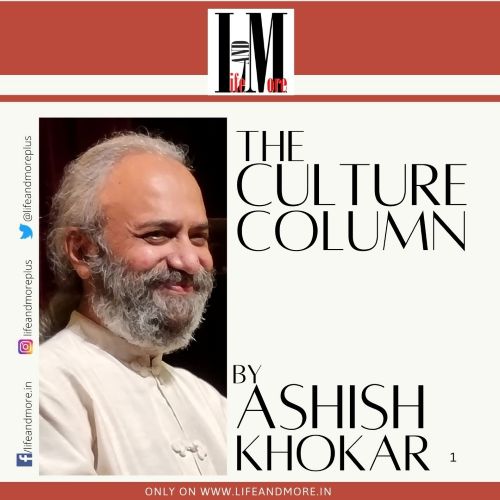
India that is Bharat is so rich and diverse in its arts and crafts, that all of Europe and America put together may not have such diversity of forms, richness of tribal, folk, ritual content and continuity, historically. This is no sweeping statement but borne out of research. Google now helps even the uneducated to arrive at data, empirical findings and analysis.
Take just one art form, painting. Where is indigenous art still left in Europe? Think . Keep thinking. Lappland in the North of Sweden? Romania in the Southern west? Spain in the South? Even if it is there, is it continuing in daily life or just a museum piece? In stalactite caves of Bari in Italy or moss rocks of Brittany in France or old monuments of Greece? Patterns in textiles one can find but social, indigenous art as a daily- practiced art?
Chittara in Karnataka continues as we speak. Just like Madhubani in Bihar, Warli in Maharashtra, Kalighat in Bengal. Kolam in Tamilnadu and Phulkari in Punjab. Yeh dil maange more? Then Himachal is rich in each district from Kinnaur green caps to Kullu multi-coloured.
These indigenous arts have continued for ages, without break because they were not mere art but a way of life. When a wedding took place, a child was born, a festival was celebrated, then the locals of that region carried on traditions taught by their ancestors. Simple, effective and classy.
A good example is Chittara from coastal interiors of Karnataka. Both women and men practice it till date. Using natural colours and Jute brushes (pundi naaru), they paint the most intricate art. Chittara is an embodiment of Deevara’s intrinsic socio-cultural framework. It is the only indigenous mural folk art of Karnataka. The Malenadu region’s rich cultural symbol is the Chittara.
Photo credit: Smitha Tumuluru
Look at the minute detailing. Can you imagine the brain of this simple villager, how a complex pattern is thought of in advance, like a master-chess player and how laboriously they work, bit by bit, completing it. Imagine, if one line goes wrong, they have to redo and restart! The tenacity, the focus, the devotion with which they work and, this is not their work but leisure. They farm otherwise. Till soil and then after a hard day in the field, be it rain, winter, they make time to indulge in their passion – Chittara. On the walls, on their arms as tattoos, and in pujas and weddings.
Photo credit: Smitha Tumuluru
Geeta Bhat is a possessed woman who has striven hard to bring this unique tradition to metro India. Sounds easy. But first make time and money to go by passenger train, bus or bullock cart to the interiors of a region. As a single woman, stay wherever, eat whatever and yet be enthused about someone else’s work. In India, where we hardly can function or work peacefully in a team, for her to spot talent and then see what design, pattern or idea will work and bring it to city to talk about it, try to tell indifferent and often illiterate netas and bored babus and dull policy-makers of its beauty and the need for urgent support to then platform it in a meaningful way and even help make it popular – what a long journey! And do this whole cycle not once, but every year for more than 20 years! Padamshri toh banta hai.
Not to stop there, she compounded her madness recently in a lavish, most handsome 200+ paged book titled Deevara Chittara – its people , culture and … Published by Prism (Pranesh Sirivara be thanked for doing such an excellent production) it has to die-for photo documentation of Chittara art, artists, village, life by award winning photo-artist Smitha Tumuluru and classy yet detailed design by Namrata Cavale. In any other metro these two would be like butterflies in a wine and cheese faltu party, featured on page 3! Here, in simple namma Bengaluru, they were epitome of good grace, culture and refinement eating simple Vada and drinking coffee. No drama, just a dream fulfilled. The exhibition they put up in Wadia Hall of Indian Institute of World Cultures was the best-ever in recent years. Detailed description, designed aesthetically and done oh! so sensibly. Both the book and the exhibition are works of art. Rajyotsava Award of Karnataka must go to them.
This team has done what entire government machinery has not in 60 years since the state of Karnataka was formed in 1956. The collective work of decades of all staff and systems in tourism and culture fields could not produce one solid book that this team has. A shame! Karnataka could have dined out of this art identity for long but better late than never.
Do we as a society value art? A miniscule may attend an exhibition, but how many buy the catalogue? Even a hundred rupees no one wants to spend but will spend five hundred on a film show, over in three hours. Books – how many buy now, in this age of digital freebies? Art. Only the most evolved buy, the monied will still buy jewellery or luxury items, watches or expensive cars for which there are no roads to drive on in most metros! In Bengaluru alone, five km gets covered in one hour! I rarely drive my car – a 15-year-old red dinky toy – in 4th gear; 5th can be used only on the way to the airport.
As a country we are so rich but as a race we are very poor in art appreciation, history or community service. Bored youth have no direction but tell them to go work as a volunteer just one day a week in some charitable cause (hospital, school, neighbourhood park or beach clean-up campaigns) and they look at you “uncle, get real. Are you mad?” Europe and USA may have its ills of violence, drugs and gun culture but that society is made of community service and goodwill. For a common cause, all come together. Like Geeta Bhat here has.
Together we can make a difference and build a new India that is Bharat. In this month of Tagore (Rabindranath not Sharmila) let’s arise, awake and serve the country we are so lucky to have been born in. This India has never invaded another country, unless for self-defense; given refuge to millions from Tibet to Bangladesh, Afghanistan and Sri Lanka, when we ourselves didn’t have enough to eat and has followed the path of dharma and karma. All varieties seasons – 6! – abound here and yes, the sun shines all year through (go live in Canada or Scandinavia then you’d know what sunshine is about). Rivers that give life. Forests that give fruit and medicinal plants. Count your blessings and blessings to mother earth from where comes food and indigenous art like Chittara which gives food for the soul.
Ashish Khokar is India’s reputed arts historian, author and writer with 51 books to credit and 5k articles in the print media in the last 50 years. A pioneer in arts admin from the 1970s, he has worked nationally (STAS, Sahitya Kala Parishad, INTACH, Martand Singh Asso) and internationally ( Festivals of India in France, Sweden, Germany , China and with AFS of USA as its India head) with many agencies,
institutions, museums and more. At heart a teacher, his discourses are full of information with humour and he is an expert visiting many universities and also written 85 modules for UGC’s E- pathshala M.A. Course. He is also the editor-publisher of India’s only yearbook on dance – attenDance – now in its 25th year. He has given attenDance awards to 40+ talents in the last 15 years and mentors many.
He was the dance critic of the Times of India for 20 years, The Hindu for 5 and continues to be a contributor to India Today for the last 25 years. Ditto 25 years for India’s best portal for dance, narthaki.
As custodian of India’s largest dance archives and collection valued at 7 crores – built by his illustrious family Mohan and Saroja Khokar and donated to the nation@IGNCA – he has shown the way to selfless service to India and its arts, education and culture.


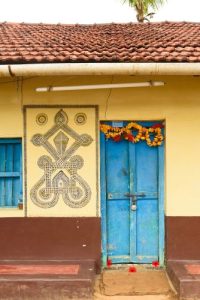
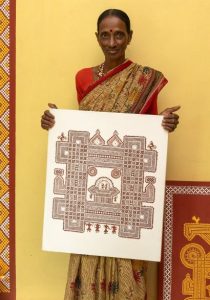
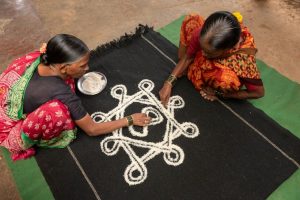

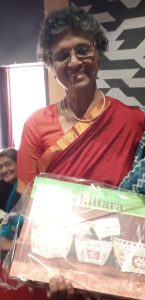
9 Comments
The very core of Karnataka has its beauty in her Art which is her heart. Chittara I wish you all best . I am a rangoli fenetic right from childhood till now I am keeping that one thing alive and intact by putting early morning rangoli at the door step. This Metro town also comes alive once the rice pudi ,Urashina and kumkuma colours the meetlu and doorstep decorated with rangoli.
I loved the line Ravindranath not……..ha ha ha
Art is not just what you see ..but what you make others see!
The article by Shri Ashish Khokarji in his inimitable signature style, is an eye opener for all of us Indians who take pride in our Motherland but take her cultural legacy for granted . I particularly loved the concluding line -” … indigenous art like Chittara which gives ifood for the soul” ..Truly food for thought Ashishji 🙏 Respects
Kalashri Dr Lata Surendra
Namaste. Yes, by virtue of being a proud inhabitant of thus blessed land of Karnataka, I feel extremely elated and profoundly fulfilling reading about the ancient folk art form of Chittara. It’s revealing that such simpletons carry forward the ancient legacy passed down the generation with passion alone and after ensuring their livelihood concerns are addressed. Expecting little in return for pursuing passion speaks volumes about the proponents focus, dedication, and verve. Kudos to them. Mrs. Bhat deserves accolades from the government machinery and the art patrons alike. Vividly elucidating the art form with such finesse and inference can be accomplished by who else but Khokarji. The column does just that. An eye opener.
Thank you Ashish ji for bringing this neglected tradition to life with your lyrical writing. So proud of my state and thankful to kala sadhaki Geetha Ji for reviving Chittaara. So many pertinent points made about our heritage and society. Indigenous art surely needs more recognition and respect in our country!
Thank you for this wonderful article, Ashish ji! I had no idea that Chittara is the only indigenous mural folk art of Karnataka—what a gem. The way you explained the use of natural colours and pundi naaru was fascinating, and I loved how these motifs are deeply connected to life events like weddings and festivals. It’s so heartening to read about such living traditions, and your writing truly brought it alive for me. Looking forward to exploring more through your work.
So well said Ashish ji for about India’s soft power ie it’s cultural and artistic heritage especially its art, music, dance, literature, and spiritual traditions. This soft power is one of the most effective ways India has connected with the world, but sadly it’s often overlooked or underappreciated within the country itself.There is sometimes a disconnect between traditional forms of art and modern-day shallow aspirations.May be this can be one of the few reasons for its less appreciaction.
Also more focus on economic growth, technology, can sometimes overshadow the preservation and promotion of traditional art forms.There is strong need to integrate India’s cultural richness into the broader national interest and even on the global stage
Ashish ji, thank you for the wonderful article on “Chittara”!
In the rich tapestry of Indian culture and ethnicity, many hues of Art are lying hidden – waiting to be brought forth. Thanks to Geetha Bhat for showcasing one such Art “Chittara” – the indigenous Art Form of the Deevara community of Karnataka – to us Bangalorians!
Who would have imagined that there is something like “Chittara” where geometrically perfect, intricate designs are drawn by simple people to celebrate their everyday life? Chittara is not some random art, its a kaleidoscope of one whole community!
All credit to Geetha for making it her life’s mission to show the world the cultural heritage of Karnataka!
Kudos to her and her team for doing an excellent job of bringing awareness of Chittara in the form of a Coffee Table book and an exhibition – giving people an opportunity to experience this Artform directly through workshops and artist interactions!
Geetha Bhat’s passion and her 20 years’ relentless hard work with a single minded focus to bring the Deevara community out of its shadow, definitely deserves recognition at the State as well as the National level.
I wish Geetha all the best – may her tribe increase!
Dear Ashish ji,
Thank you immensely for placing Chittara on a national and international platform. Who else but only you could elucidate this folk artform so beautifully. The way you perceive the art form is as intricate and refine as Chittara itself. Your words celebrate the wealth of the Deevaru Community.
This is very informative, Thank you, Ashish dada, for your insightful piece on Chittara art. You beautifully capture the soul of this vibrant tradition and the dedication of the Deevara community. Geeta Bhat’s work in preserving and promoting Chittara is truly commendable. Your article is a wonderful reminder of the richness of our cultural heritage and the need to keep it alive.